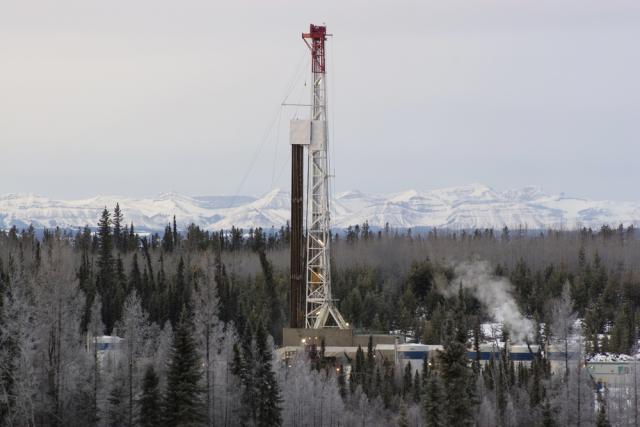
A rig is shown in the foothills of Alberta, where the government has lifted a curtailment on new oil wells effectively immediately. (Source: Al Parker Photography/Shutterstock.com)
The Canadian province of Alberta said on Nov. 8 that new conventional oil wells could be drilled without being subject to government production limits, in a bid to boost its ailing economy.
The change takes effect immediately, the provincial government said in a statement. The broader curtailment policy remains in effect to hold oil production to levels that can be moved through congested export pipelines.
Alberta introduced mandatory production curbs beginning on Jan. 1 this year to reduce a glut of oil in storage and shore up prices. The provincial government said last week that it would allow companies to produce additional oil if they move it by rail.
“Companies are currently making investment decisions and we want those dollars and jobs to be in Alberta,” Alberta Energy Minister Sonya Savage said.
The province, home to most of Canada’s oil production, has been hurt by layoffs from oil producers such as Husky Energy Inc and oilfield service companies which drill wells.
The Alberta government, led by right-leaning Premier Jason Kenney, said last month that its deficit in the 2019-20 fiscal year would increase, reaching C$8.7 billion.
Curtailment still applies to existing producing wells, the government said. The policy affects Alberta’s 16 biggest oil producers, limiting total output to 3.8 million barrels per day (bbl/d) this month.
Canada will see a 10% drop in oilfield wells drilled in 2020, as producers reduce investment, the Petroleum Services Association of Canada forecast last week.
Alberta produced 480,000 bbl/d of conventional crude in September. It accounts for 16% of the province’s oil production, with the vast majority coming from the oil sands, according to the Alberta Energy Regulator.
The change is a boost for Canadian Natural Resources Ltd., the biggest conventional oil producer, as well as Tourmaline Oil Corp., Seven Generations Energy Ltd. and Paramount Resources Ltd., said Tristan Goodman, president of the Explorers and Producers Association of Canada.
“It’s definitely going to result in more wells and more jobs,” Goodman said. “The extent of that is yet to be determined. This is not going to be the start of a boom.”
Even with curtailment limits lifted for new wells, the Canadian oil industry’s larger problem is finding capital to pay for them, he said.
Recommended Reading
US Drillers Cut Oil, Gas Rigs for Fourth Week in a Row-Baker Hughes
2024-04-12 - The oil and gas rig count, an early indicator of future output, fell by three to 617 in the week to April 12, the lowest since November.
US Drillers Cut Oil, Gas Rigs for Third Week in a Row
2024-04-05 - The oil and gas rig count, an early indicator of future output, fell by one to 620 in the week to April 5, the lowest since early February.
US Drillers Add Oil, Gas Rigs for First Time in Five Weeks
2024-04-19 - The oil and gas rig count, an early indicator of future output, rose by two to 619 in the week to April 19.
US Gas Rig Count Falls to Lowest Since January 2022
2024-03-22 - The combined oil and gas rig count, an early indicator of future output, fell by five to 624 in the week to March 22.
US Drillers Add Most Oil Rigs in a Week Since November
2024-02-23 - The oil and gas rig count rose by five to 626 in the week to Feb. 23
